The process of neutralising the space and the objects within, subverts the reading of what we see as everyday things and in doing so, disrupts the signs that normally allow us to read and understand our surroundings.
That which is beyond words must always remain beyond words. It is the realisation of the limitation of language that encourages investigation into a more tangible examination and analysis that speaks of the unspeakable, and in doing so, attempts to overcome the impasse of inexpressibility.
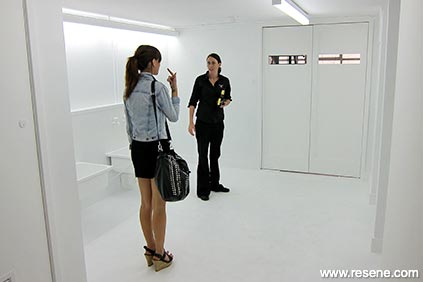
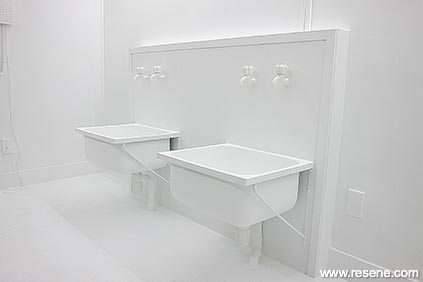
The process of neutralising the space and the objects within, subverts the reading of what we see as everyday things and in doing so, disrupts the signs that normally allow us to read and understand our surroundings.
As a consequence this questions our fundamental acceptance in what we believe we know and don’t know; it is the absences that inject in us a sense of nervousness; the erasure of colour and the alteration to the materiality within the space, that creates an unsettling, a dislocation – it leaves us now finding ourselves having to cope with something beyond what we see. This enquiry is about what is not there as much as what is there. And how that affects our state of awareness. This is a kind of discourse of nothingness and the demarcation of neutrality within the practice.
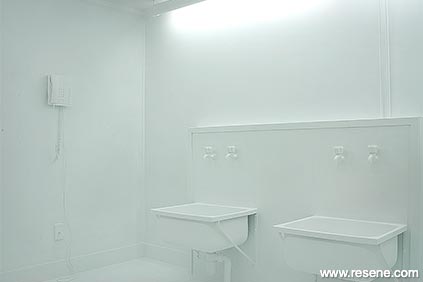
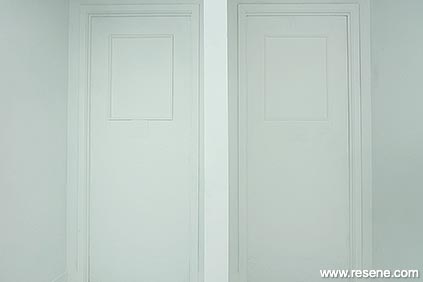
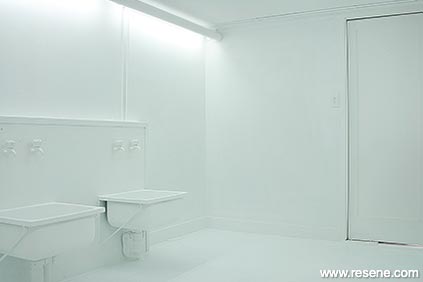
There is something disquieting about the process engaged and the result it produces. Something unaccountably strange occurs. There is a sense of cleansing or an act of spiritual purification that transcends the architectural space, something that goes beyond our own human experience or consciousness; something that provokes further investigation, seeking answers, as though searching for clarification regarding our own state of awareness, and the daily realisation of our own being of who we are, something which continually presents us with a multiple of absences rather than answers.
We need to listen more closely, and observe more fervently in order to understand the presence and the absence; realising through the whitening out, that moment of nothingness, a pictorial sensibility.
The silence broken only by the sound of the silence being broken.
Artist, Walter Kandinsky writes, “Colour is a power which directly influences the soul”.
It is in that context that my final masters project of 2010 explored the idea of neutralising an architectural space by removing all colour as we know it. This was achieved through the whitening out, a site specific artwork, and the advice and ongoing support of Resene.
White was chosen for its neutrality. White like its opposite, Black, is still a colour. In this instance the space chosen as my ‘canvas’ was the art utility room at Elam School of Fine Arts, Masters studios. This contained sinks, taps, pipes, toilet doors, wall telephone and other associated hardware – the entire space, walls, ceilings, floors, light fittings, light switches, power sockets, sprinkler cages, were all transformed to white. This required a large amount research and experimentation into paint suitability and durability due to the variation of materials. It was important that one white matched the other delivering a matt finish. This effect left audiences not quite knowing what was real and what was not. A key concern was the requirement to return the space afterwards to it original condition. Hence the temporal and restorative nature of the painted surface was also major consideration.
The final selected paint was Resene Waterborne Smooth Surface Sealer, chosen for its sanding quality, which allowed the surface to be buffed with 400 grit wet and dry sandpaper in order to deliver a smooth finish. The walls and floor joints were filled with Resene Gap Filler, the idea being, to create a seamless look to the room. The wall telephone and window glass within the access doors were also treated the same. The floor was painted with a white Resene Lumbersider for hardwearing finish during the three-day public opening to the space at the end of year graduate exhibition.
Colour Selection: Gerry Copas
Photographer: Caryline Boreham, Brad Devcich
Other Key Contributors: Lighting Payne Electrical
Project: Resene Total Colour Awards 2011
Resene case studies/awards project gallery
View case studies that have used Resene products including many from our Resene Total Colour Awards. We hope these projects provide inspiration for decorating projects of your own... view projects
Total Colour Award winners:
2023 |
2022 |
2021 |
2020 |
2019 |
2018 |
2017 |
2016 |
2015 |
2014 |
2013 |
2012 |
2011 |
2010 |
Entry info
Latest projects | Project archive | Resene news archive | Colour chart archive